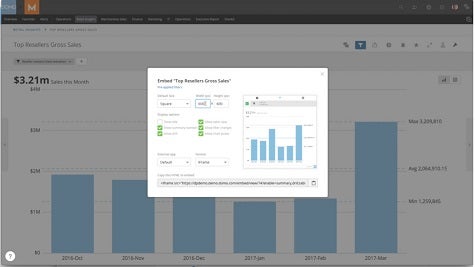One of the hurdles that many organizations face when aiming to make use of advanced analytics is the high cost of developing these applications. Because of that issue, there’s naturally a lot of interest in accessing these applications as a cloud service. The issue that many organizations have, however, is that they would like to share the results of those analytics with customers and suppliers in a way that makes it appear to be a more natural extension of their own brand.
At a Domopalooza 2017 conference this week, Domo launched Domo Everywhere, an initiative through which organizations can white label the Domo Business Cloud service or choose to embed analytics created using Dome directly within their own applications.
Jay Heglar, chief strategy officer for Domo, says that while the service already has 25 petabytes of data being managed on behalf of over 1,000 enterprise customers, many customers want to be able to share Domo data as seamlessly as possible. Having Domo analytics delivered under their brand goes a long way toward accomplishing that goal, says Heglar.
The Domo Business Cloud is itself hosted on Amazon Web Services (AWS). Domo has developed over 400 connectors that IT organizations can use to import data into Domo Business Cloud. Heglar says there’s also a published application programming interface (API) that IT organizations can employ to build their own connectors.
“We want to enable customers to brand and customize their own products,” says Heglar.
To further that goal, Domo this week also announced a Domo Embed option that allows organizations to embed Domo analytics inside their applications as well as a Domo Publish service through which data can be dynamically shared with an ad hoc group of end users. Domo this week also unfurled a Business-in-a-Box service through which end users can self-service their own reporting needs.
Being faced with a build or buy choice when it comes to application software is nothing new for most enterprise organizations. The challenge with analytics applications, however, is that building them requires a lot of expertise and resources. Because of that issue, the better part of valor often winds up being invoking a cloud service. The issue then becomes making the cloud service appear as if the organization did build an analytics application from the ground up all by its lonesome self.



